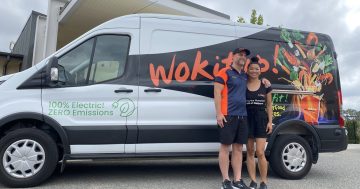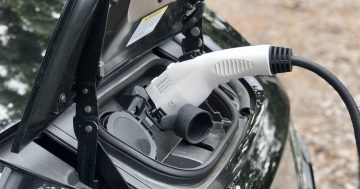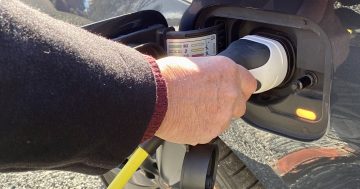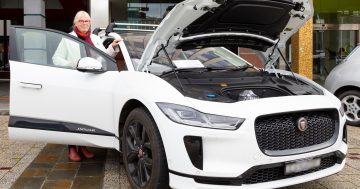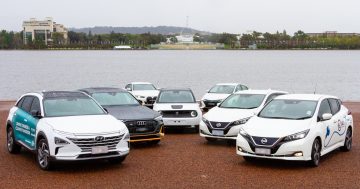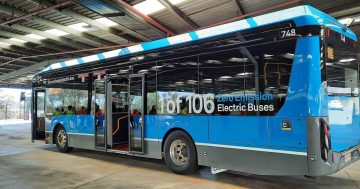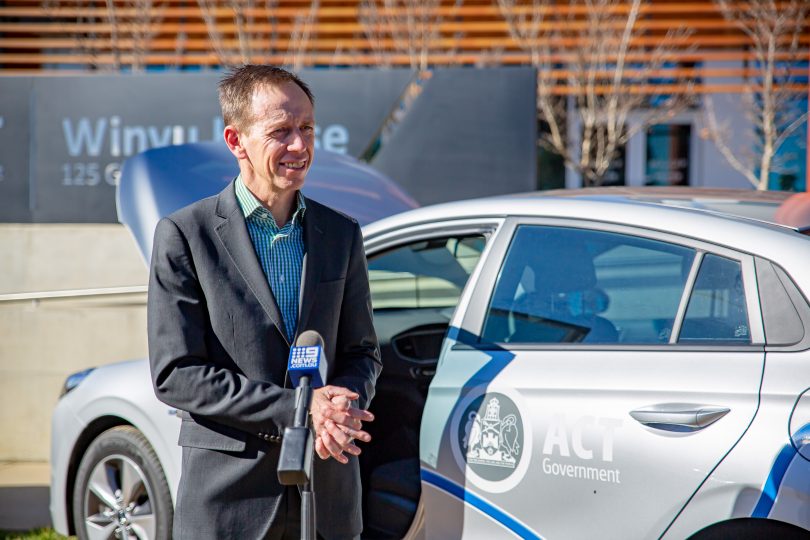
Shane Rattenbury launches the electric vehicles at Winyu House in Gungahlin. Photos: George Tsotsos.
The ACT Government car fleet has received its first two Hyundai Ioniq electric vehicles, as part of the planned long-term transition to a zero-emissions transport sector in Canberra.
The vehicles, which have a substantial battery life and a range of 230 kilometres, were welcomed into the fleet at the Government offices at Winyu House in Gungahlin by Minister for Climate Change and Sustainability Shane Rattenbury and Minister for Government Services and Procurement Rachel Stephen-Smith.
According to Hyundai, the Ioniq Electric offers the perfect transition to zero-emission electric driving from $49,253 to $54,078 but the Government paid less, although a spokesperson said the purchase price was commercial in confidence.
Charging takes less than 25 minutes to reach 80 per cent capacity on a 100kW DC fast charger, around four-and-a-half hours using a home AC fast charger, or 12 hours hooked up to a regular wall socket.
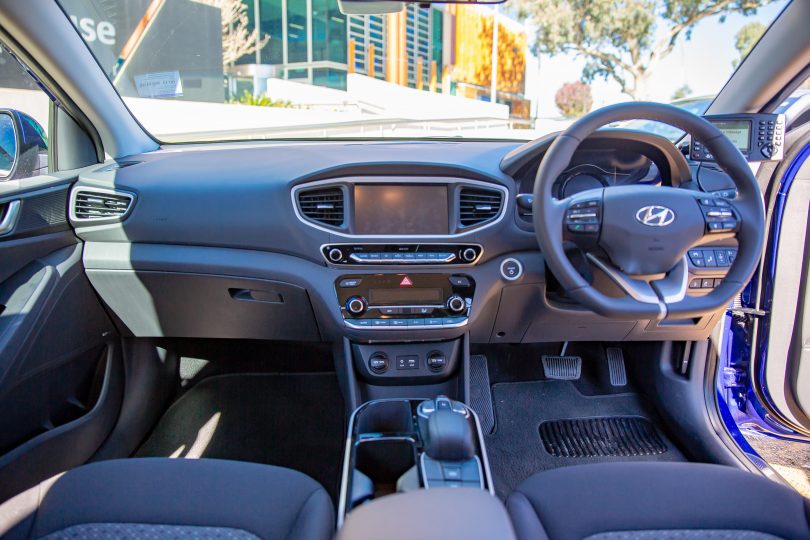
The cars can be charged to 80 per cent capacity in less than 25 minutes on a 100kW DC fast charger.
The vehicles are helping the Government achieve its commitments under the Transition to Zero Emissions Vehicles Action Plan released in 2018, which outlines actions to accelerate and support the uptake of zero-emission vehicles in the ACT.
This includes at least 50 per cent of all newly leased ACT Government fleet passenger vehicles being zero-emissions vehicles in 2019-20 (where fit for purpose) and all newly leased fleet passenger vehicles being zero-emissions vehicles from 2020-21.
Mr Rattenbury said with transport expected to create over 60 per cent of the ACT’s emissions by 2020, mostly from private car use, it was even more important that the ACT worked to bring down emissions.
“We can achieve this by encouraging active travel, providing high-quality low emissions public transport options and transitioning to zero-emissions vehicles,” he said.
“In transitioning our fleet to electric vehicles, the ACT Government is practising what we preach. These additional vehicles will join a growing ACT Government zero-emissions passenger vehicle fleet, including 17 fully electric and seven plug-in hybrids.

The Government aims to make at least 50 per cent of all newly leased ACT Government fleet passenger vehicles zero-emissions vehicles in 2019-20.
“When our renewable electricity supply reaches 100 per cent in 2020, all electric vehicles will be truly zero-emissions because they will be charged by clean electricity.”
Ms Stephen-Smith said it was great to see new zero-emissions vehicles incorporated into the Winyu House pool of vehicles.
“With an average daily travel distance of about 50 kilometres for our passenger fleet vehicles, these zero-emissions vehicles are a clean, efficient and cost-effective option,” she said.
“I look forward to seeing the ACT Government’s zero-emissions vehicle fleet continue to grow – driving climate action to deliver a cleaner, greener future.”












